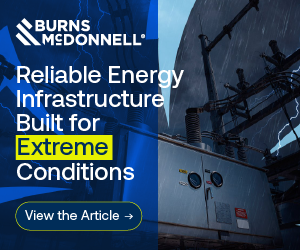Guidehouse
Danielle Vitoff is a director in Guidehouse’s Communities, Energy & Infrastructure segment. An architect by training, she applies a wide range of multidimensional problem-solving skills to her work with clients.
Danielle is adept at managing diverse stakeholder networks and driving forward strategies with wide support. She has extensive renewable energy expertise, comprising wind, solar, hydro, nuclear, carbon capture, hydrogen, biofuels, geothermal, and sustainable aviation fuels.
Among Danielle’s notable engagements are the Valley Pathways Study for the Tennessee Valley Authority, a decarbonization business plan for a gas utility facing significant carbon reduction targets, and the development of the San Antonio Climate Action and Adaptation Plan. Danielle was included in Public Utilities Fortnightly’s Under 40 list in 2022.
What are the most important actions that utilities can take today to prepare for an America First energy policy agenda from the Trump Administration? How can utilities enhance energy security goals and what role will decarbonization and clean energy play going forward?

Danielle Vitoff: A driving force behind utility investment today is the generational growth in demand. This trend and the need to replace aging infrastructure drive the majority of project investment decisions.
Utilities fully understand that their asset investment plans will persist beyond any one federal administration or federal policy decision. Given that they must develop investment strategies for an enduring energy system, utilities must take advantage of near-term opportunities, offered through supportive policy, to achieve long-term project development goals, while managing for the long-term risk of changing policy objectives.
The Trump administration’s America First policy creates a supportive environment for an all-of-the-above approach – one that recognizes that both molecules and electrons will have a place in powering the future. This federal policy transition prioritizes commercial competitiveness over specific policy objectives, which will result in a wide range of projects that are fit to purpose for the location where they are to be built. In addition, a fully deployed America First policy would onshore energy technology supply chains, removing an additional hurdle to clean energy development that many utilities encounter in their investment planning.
Under an energy scarcity regime, such as the U.S. is entering due to projected load growth, energy efficiency and load shifting must be reconsidered as critical energy resources. Every molecule and electron that can be saved can be leveraged for additional economic output. In a world of growing demand, capturing efficiency gains should be considered equivalent to developing new energy resources.
The current federal administration’s energy policy objectives may seem to favor traditional energy solutions. However, tailwinds combined with a policy supportive of project development as a whole may provide the avenue for utilities to bolster energy security, while investing in alternative solutions. Beyond the reasons already mentioned, if America is to further establish itself as an energy powerhouse, it must continue developing a varied energy supply and supply chain. m



